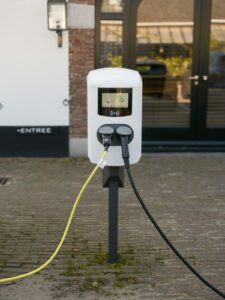
Home / EV Charging News / Electric Vehicles and Cybersecurity: Mitigating Risks in the Age of Connectivity
Electric vehicles (EVs) have been growing in popularity in recent years, and with the rise of connected and autonomous technologies, they are becoming even more advanced. While these advancements have improved the efficiency and safety of EVs, they have also created new cybersecurity risks that must be addressed. In this article, we will explore the cybersecurity risks associated with connected and autonomous EVs and the importance of developing secure systems and protocols.
As electric vehicles become more connected and autonomous, they become more vulnerable to cybersecurity risks. Some of the most significant risks include:
Given the potential risks of cybersecurity threats to connected and autonomous EVs, it is essential to develop secure systems and protocols to protect against these threats. This is important for several reasons, including:
The automotive industry, government agencies, and cybersecurity experts are all working to improve cybersecurity in connected and autonomous EVs. Some of the efforts include:
As EV technology continues to evolve, so too will the cybersecurity threats and solutions. Some of the future directions for cybersecurity in EVs include:
As electric vehicles become more connected and autonomous, cybersecurity risks will increase. It is essential to develop secure systems and protocols to protect against these risks and ensure the safety of drivers and passengers, protect personal and financial data, preserve the integrity of the EV ecosystem, and avoid costly litigation and reputational damage. The automotive industry, government agencies, and cybersecurity experts are all working to improve cybersecurity in EVs, but continued collaboration and investment will be necessary to stay ahead of evolving threats. Ultimately, the widespread adoption of EVs will depend on the ability to provide secure and reliable technology that consumers can trust
$2,890.00 Original price was: $2,890.00.$2,790.00Current price is: $2,790.00.
$3,950.00 Original price was: $3,950.00.$3,450.00Current price is: $3,450.00.
$1,650.00 Original price was: $1,650.00.$1,590.00Current price is: $1,590.00.
$2,290.00 Original price was: $2,290.00.$2,150.00Current price is: $2,150.00.
$1,290.00 Original price was: $1,290.00.$799.00Current price is: $799.00.

Your Power Management Partner for Over 25 Years Future Generations Depend on Our Decisions Today ™
2024 © All rights reserved by CyberSwitching